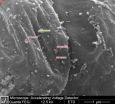(Press-News.org) Reports coming from Australia are more positive than negative now with regards to the Morwell fire, but officials say they still have a "long way to go." Considerable progress has been made in extinguishing the fire, but there is still significant heat that continues to generate smoke from the open mine. Fire activity has been cut in half since February 11, but there are still "weeks of firefighting ahead" according to Craig Lapsley, Fire Services Commissioner on the County Fire Authority website.
According to the Australian News, "The [Morwell] fire, which started on February 9, is burning on two worked-out faces of the mine, spread over 2.5km. A number of firefighters have been treated for higher than normal levels of carbon monoxide and the EPA is doubling its air monitoring in response to community concerns."
The Snowy River Complex fire has currently burned over 500 square miles to date. Many of the bushfires are now considered under control by local fire authorities, however, due to the hot, dry conditions that are not abating threaten more fire outbreak in the area. It has been a devastating fire season in Victoria this year.
INFORMATION:
This natural-color satellite image was collected by the Moderate Resolution Imaging Spectroradiometer (MODIS) aboard the Terra satellite on February 23, 2014. Actively burning areas, detected by MODIS's thermal bands, are outlined in red. NASA image courtesy Jeff Schmaltz, MODIS Rapid Response Team. Caption: NASA/Goddard, Lynn Jenner.
Bushfires continue to plague Victoria, Australia
2014-02-24
ELSE PRESS RELEASES FROM THIS DATE:
Study of Hispanic/Latino health presents initial findings
2014-02-24
February 24, 2014 – (BRONX, NY) –One in every six people in the U.S. is Hispanic/Latino and as a group they live longer than non-Hispanic whites (81.4 years vs. 78.8 years). Yet, despite their strong representation and relative longevity, little is understood about this group's health conditions and behaviors.
The Hispanic Community Health Study/Study of Latinos (HCHS/SOL), the landmark research study of Hispanic/Latino health funded by the National Institutes of Health (NIH), has released initial findings that show significant variations in disease prevalence and health ...
Researcher builds a better job performance review
2014-02-24
MANHATTAN -- A critical job performance evaluation can have a negative effect on any employee, a Kansas State University researcher has found.
By studying how people view positive or negative feedback, Satoris Culbertson, assistant professor of management, has determined that nobody -- even people who are motivated to learn -- likes negative performance reviews. Culbertson is developing ways to help managers improve the process for reviewing employees.
Culbertson and collaborators at Eastern Kentucky University and Texas A&M University surveyed more than 200 staffers ...
Now it will become cheaper to make second-generation biofuel for our cars
2014-02-24
Producing second-generation biofuel from dead plant tissue is environmetally friendly - but it is also expensive because the process as used today needs expensive enzymes, and large companies dominate this market. Now a Danish/Iraqi collaboration presents a new technique that avoids the expensive enzymes. The production of second generation biofuels thus becomes cheaper, probably attracting many more producers and competition, and this may finally bring the price down.
The world's need for fuel will persist, also when the Earth's deposits of fossil fuels run out. Bioethanol, ...
Biomedical bleeding affects horseshoe crab behavior
2014-02-24
DURHAM, N.H. – New research from Plymouth State University and the University of New Hampshire indicates that collecting and bleeding horseshoe crabs for biomedical purposes causes short-term changes in their behavior and physiology that could exacerbate the crabs' population decline in parts of the east coast.
Each year, the U.S. biomedical industry harvests the blue blood from almost half a million living horseshoe crabs for use in pharmaceuticals — most notably, a product called Limulus amebocyte lysate (LAL), used to ensure vaccines and medical equipment are free ...
Significant discrepancies between FISH and IHC results for ALK testing
2014-02-24
DENVER –The findings of a recent study indicate that routine testing with both fluorescent in situ hybridization (FISH) and immunohistochemistry (IHC) may enhance the detection of ALK-positive non-small cell lung cancer (NSCLC). Accurate determination of ALK-positive tumors is necessary to identify patients with advanced NSCLC who are most likely to benefit from targeted therapy with an ALK inhibitor.
The discovery of ALK rearrangement in about 1% to 7% of NSCLCs led to the development of ALK inhibitors, such as crizotinib, which have significantly improved treatment ...
Researchers find flowing water can slow down bacteria
2014-02-24
In a surprising new finding, researchers have discovered that bacterial movement is impeded in flowing water, enhancing the likelihood that the microbes will attach to surfaces. The new work could have implications for the study of marine ecosystems, and for our understanding of how infections take hold in medical devices.
The findings, the result of microscopic analysis of bacteria inside microfluidic devices, were made by MIT postdoc Roberto Rusconi, former MIT postdoc Jeffrey Guasto (now an assistant professor of mechanical engineering at Tufts University), and Roman ...
Tip to dieters: Beware of friends and late night cravings
2014-02-24
There's more to dieting than just sheer willpower and self-control. The presence of friends, late night cravings or the temptation of alcohol can often simply be too strong to resist. Research led by Heather McKee of the University of Birmingham in the UK monitored the social and environmental factors that make people, who are following weight management programs, cheat. The study¹ is published in the Springer journal Annals of Behavioral Medicine.²
Eighty people who were either part of a weight-loss group or were dieting on their own participated in the one-week study. ...
Novel assay developed for detecting ALK rearrangement in NSCLC
2014-02-24
DENVER – Researchers have developed a novel technique for detecting ALK rearrangements in non-small cell lung cancers (NSCLCs) that is more sensitive and easier to perform than currently available techniques. The technique can help enhance the routine practice of diagnostic ALK testing on NSCLCs, which is crucial for identifying patients with advanced NSCLC who are most likely to benefit from targeted therapy with an ALK inhibitor.
None of the current three routine methods used to detect ALK rearrangements in NSCLC is without drawbacks, especially for tissue specimens ...
A fast and effective mechanism to combat an aggressive cancer
2014-02-24
Ovarian cancer accounts for more deaths of American women than any other cancer of the female reproductive system. According to the American Cancer Society, one in 72 American women will be diagnosed with ovarian cancer, and one in 100 will ultimately die of the condition.
Now Prof. Dan Peer of Tel Aviv University's Department of Cell Research and Immunology has proposed a new strategy to tackle an aggressive subtype of ovarian cancer using a new nanoscale drug-delivery system designed to target specific cancer cells. He and his team – Keren Cohen and Rafi Emmanuel from ...
EARTH Magazine: Tsunamis from the sky
2014-02-24
Alexandria, VA – On a beautiful, clear June morning in 1954, a massive wave suddenly swept out of Lake Michigan killing at least seven people along the Chicago waterfront. At the time, the wave was attributed to a storm that had earlier passed over northern Lake Michigan, but how it came to swamp faraway Chicago, with no warning, was not understood.
The Great Lakes, along with the Mediterranean, Japan and many other parts of the world, have a long history of such waves, which have characteristics similar to tsunamis triggered by earthquakes or landslides.
Only recently, ...



